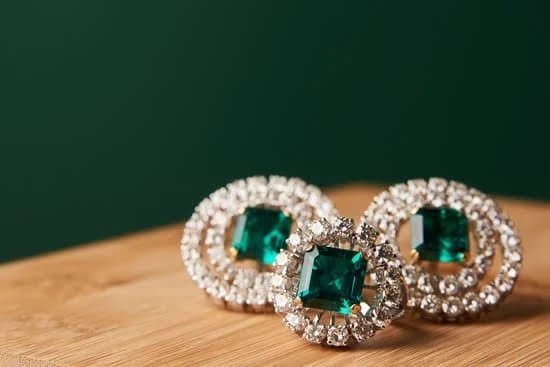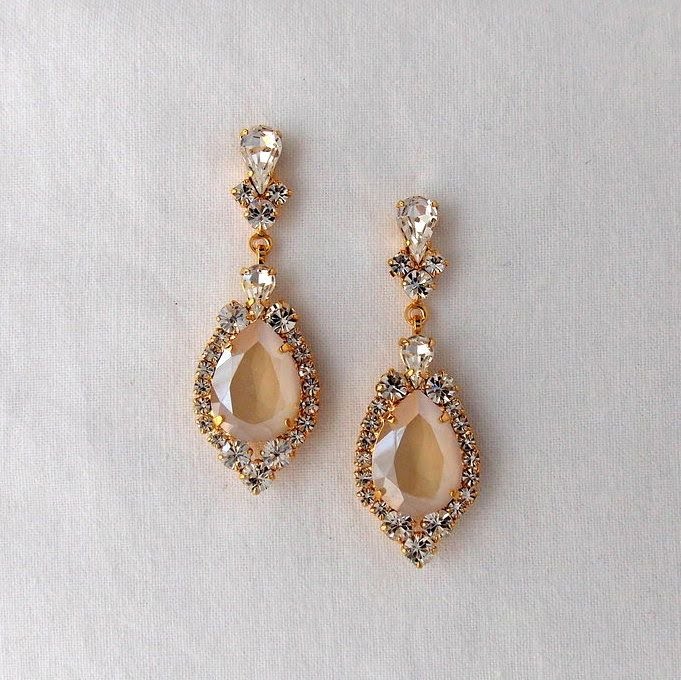The history of Aztec jewelry is a fascinating reflection of the rich and vibrant civilization and culture of the Aztec people. From intricate designs to symbolic meanings, Aztec jewelry played a significant role in society, religious rituals, and ceremonies. This article delves into the history of Aztec jewelry, its significance, materials and techniques used in making them, symbolism behind their designs, and their influence on modern fashion and design.
The Aztec civilization was one of the most dominant and advanced Mesoamerican cultures during the 14th to 16th centuries. Known for their remarkable achievements in architecture, art, agriculture, and warfare, the Aztecs also had a deep appreciation for jewelry. Their jewelry-making traditions were highly valued within society as status symbols and as offerings to deities during religious ceremonies.
Materials such as gold, silver, copper, shells, feathers, and gemstones were commonly used in Aztec jewelry making. Skilled artisans utilized various techniques such as casting, hammering, etching, filigree work, and stone carving to create stunning pieces that expressed their cultural beliefs and traditions. The elaborate craftsmanship and intricate designs of Aztec jewelry reflected the sophistication of their civilization.
The Significance of Jewelry in Aztec Society
Jewelry has always held a significant role in the Aztec society, representing both the social status of an individual and their connection to the divine. The Aztec civilization, which thrived from the 14th to the 16th centuries, is known for its elaborate and intricate use of jewelry in their culture. From headdresses to necklaces, bracelets, and earrings, each piece of jewelry had a specific meaning and importance.
Aztec jewelry was not just a fashion statement; it was a symbol of power, wealth, and identity within the society. Only members of the ruling class and elite warriors were allowed to wear certain types of jewelry that showcased their status. Commoners also wore jewelry made from less expensive materials like shells and feathers as a way to display their status within their community. Jewelry played a vital role in establishing social hierarchy within the Aztec civilization.
The history of Aztec jewelry making involves the use of various materials such as gold, silver, copper, shell, feathers, and precious gemstones. Skilled artisans used intricate techniques such as casting, filigree work, embossing, inlaying, and molding to create stunning pieces of jewelry that reflected the craftsmanship of the ancient Aztecs. These techniques have been passed down through generations and continue to be appreciated in contemporary society.
Materials and Techniques Used in Aztec Jewelry Making
The materials and techniques used in Aztec jewelry making are a testament to the skill and craftsmanship of this ancient civilization. Aztec jewelry was often made using gold, silver, copper, and precious gemstones such as turquoise, jade, and emerald. These materials were highly valued by the Aztecs and were often obtained through trade or as tribute from conquered civilizations.
Techniques
The Aztecs were skilled metalworkers and used a variety of techniques to create their intricate jewelry pieces. They were adept at casting, soldering, embossing, and filigree work. In addition to metals, they also utilized other materials such as feathers, shells, and colorful stones to create vibrant and elaborate designs.
Symbolism
The jewelry crafted by the Aztecs was not only a display of wealth and status but also held deep symbolic significance. Certain symbols and motifs portrayed on the jewelry were linked to Aztec mythology, religious beliefs, and societal hierarchy. For example, serpent motifs represented Quetzalcoatl – the feathered serpent deity who was considered a creator god in Aztec religion.
The intricate designs and skilled craftsmanship of Aztec jewelry continues to influence modern jewelry making techniques. The use of bold colors, geometric patterns, and symbolic motifs is still prevalent in contemporary jewelry design. Additionally, the incorporation of diverse materials is also inspired by the rich history of Aztec jewelry making. Today’s jewelers continue to draw inspiration from the history of Aztec jewelry while adding their own creative interpretations into their designs.
Symbolism and Meaning Behind Aztec Jewelry Designs
The history of Aztec jewelry is rich with symbolism and meaning, as each design and piece of jewelry held significant cultural and religious importance. The Aztecs were masterful artisans who used a variety of materials and techniques to create intricate and meaningful jewelry that reflected their beliefs and traditions.
Some of the key symbols used in Aztec jewelry designs include:
- Serpents: Symbolizing fertility, creation, and rebirth
- Birds: Representing the connection between the earthly realm and the spiritual realm
- Precious stones: Such as jade, turquoise, and quartz, which were believed to hold spiritual power
- Sun and moon motifs: Symbolizing important deities in Aztec religion
These symbols were often incorporated into various types of jewelry, including necklaces, bracelets, earrings, and headdresses. The intricate designs not only showcased the artistic skill of the Aztec craftsmen but also carried deep cultural significance.
The meanings behind these designs were rooted in Aztec beliefs and mythology. For example, the use of serpents represented Quetzalcoatl, the feathered serpent deity associated with fertility and creation. The incorporation of precious stones signified a connection to spiritual realms and was believed to provide protection to the wearer. Understanding the symbolism behind these designs provides valuable insight into the worldview of the Aztec people and their reverence for nature, cosmology, and spirituality.
Role of Jewelry in Aztec Religious Rituals and Ceremonies
The Aztec civilization was known for its rich history of intricate and symbolic jewelry, which played a significant role in their religious rituals and ceremonies. Jewelry was not only a form of adornment for the Aztec people, but it also held deep cultural and religious meanings. The Aztecs believed that jewelry had the power to connect them with their gods and ancestors, making it an essential part of their religious practices.
During religious ceremonies, priests, nobles, and warriors would adorn themselves with elaborate jewelry made from precious metals such as gold and silver, as well as precious gemstones like jade and turquoise. These pieces were intricately crafted using techniques such as filigree, casting, and engraving, showcasing the advanced metalworking skills of the Aztec artisans.
The symbolism behind Aztec jewelry designs was deeply rooted in their religious beliefs. For example, the use of specific animal motifs such as eagles and serpents symbolized divine energies or deities within their pantheon. Additionally, certain gemstones were believed to have spiritual significance and were often used in religious rituals to honor the gods.
Notable examples of Aztec jewelry that hold historical significance include headdresses adorned with feathers and gemstones worn by rulers during ceremonial events, as well as intricate breastplates worn by warrior elites during sacrificial rituals. These artifacts provide valuable insight into the importance of jewelry in Aztec religious practices and are cherished remnants of this ancient civilization’s heritage.
Influence of Aztec Jewelry on Modern Fashion and Design
Aztec jewelry has left a lasting impact on modern fashion and design. The intricate and elaborate designs of Aztec jewelry have inspired contemporary jewelry makers and designers around the world. The use of geometric patterns, vibrant colors, and symbolic motifs in Aztec jewelry has been incorporated into modern jewelry pieces, bringing a touch of history and culture to the fashion industry.
Incorporation of Aztec Elements
Many fashion designers have drawn inspiration from the history of Aztec jewelry, incorporating elements such as turquoise stones, gold accents, and intricate beadwork into their collections. These modern interpretations pay homage to the craftsmanship of Aztec artisans while adding a unique flair to today’s fashion trends. Additionally, the use of Aztec-inspired designs in accessories such as belts, handbags, and headpieces has become increasingly popular in the fashion world.
Aztec Influence on Contemporary Design
Not only is Aztec jewelry influencing modern fashion trends, but it has also made its mark on interior design and home decor. The bold patterns and vibrant colors seen in traditional Aztec jewelry have inspired contemporary interior designers to incorporate similar elements into their work. From textiles to furniture, the influence of Aztec design can be seen in various aspects of home styling.
Cultural Appreciation
The integration of Aztec-inspired jewelry and design into contemporary fashion represents a form of cultural appreciation and acknowledgment of the rich history behind these ancient artifacts. By embracing the beauty and significance of Aztec jewelry in modern contexts, people are keeping the legacy alive while celebrating the craftsmanship and artistry of this ancient civilization.
Notable Examples of Aztec Jewelry and Their Historical Significance
Aztec jewelry is known for its intricate designs, skilled craftsmanship, and use of precious materials. One notable example of Aztec jewelry is the pectoral, a large and ornate pendant worn on the chest by Aztec rulers and high-ranking officials.
These pectorals were often made of gold or jade and featured intricate carvings and symbols representing the Aztec pantheon of gods. They were not only a symbol of status and power but also served as protective amulets believed to ward off evil spirits.
Another remarkable piece of Aztec jewelry is the ear flares, also known as ear spools or ear plugs. These were worn by both men and women of high social status and were typically made of jade or other precious stones. The larger the ear flare, the higher the social rank of the individual wearing them. They were often decorated with elaborate carvings and depicted important symbols from Aztec mythology.
One of the most famous examples of Aztec jewelry is the ceremonial breastplate worn by Moctezuma II, the last emperor of the Aztecs. This breastplate, known as “The Two Serpents,” was made of gold and turquoise and was adorned with intricately carved serpent motifs. It was believed to be a symbol of divine protection and represented Moctezuma’s authority as the ruler of the Aztec empire.
These examples highlight the artistry and symbolism present in Aztec jewelry, providing valuable insights into the spiritual beliefs, social hierarchies, and cultural traditions of this ancient civilization.
| Example | Historical Significance |
|---|---|
| Pectoral | A symbol of status, power, and protection in Aztec society |
| Ear Flares | Indicators of social rank; adorned with important symbols from Aztec mythology |
| Ceremonial Breastplate | Worn by Moctezuma II; represented divine protection and imperial authority |
Impact of Spanish Colonization on Aztec Jewelry Traditions
When the Spanish arrived in the Aztec Empire in the 16th century, they were amazed by the abundance of gold and precious stones used in Aztec jewelry. The Spaniards sought to exploit these resources, leading to the plundering of Aztec treasures and the destruction of many pieces of jewelry. This marked a significant turning point in the history of Aztec jewelry, as it had a profound impact on their traditions and practices.
The Spanish conquest not only resulted in the loss of many valuable Aztec jewelry pieces but also led to the suppression of traditional jewelry-making techniques. The Spaniards imposed their own European styles and designs, which gradually replaced the intricate and symbolic Aztec jewelry. This cultural takeover had long-lasting effects on Aztec jewelry traditions, as it altered the materials, techniques, and meanings associated with their designs.
Despite the devastating impact of Spanish colonization on Aztec jewelry traditions, some aspects of their craftsmanship managed to survive through syncretism and adaptation. For example, elements of traditional Aztec designs were incorporated into colonial-era jewelry made by indigenous artisans under Spanish influence. This blending of styles helped preserve certain aspects of Aztec jewelry-making techniques and symbolism amidst overwhelming foreign influence.
| Spanish Conquest | Cultural Takeover |
|---|---|
| Led to plundering of Aztec treasures | Imposed European styles and designs |
| Destruction of many pieces of jewelry | Gradually replaced intricate Aztec designs |
| Suppression of traditional techniques | Altered materials, techniques, and meanings |
Preservation and Legacy of Aztec Jewelry in Contemporary Society
In contemporary society, the history of Aztec jewelry continues to be preserved and celebrated. The legacy of this ancient civilization’s craftsmanship and symbolism lives on in museums, art galleries, and even in modern fashion and design. The intricate techniques and materials used by the Aztecs in their jewelry-making have left a lasting impact on the art world, inspiring artists and designers to create pieces that pay homage to the rich cultural heritage of the Aztec people.
One notable example of the preservation of Aztec jewelry is evident in the continued study and research into its historical significance. Archaeologists and historians are constantly uncovering new discoveries related to Aztec jewelry, shedding light on its role in Aztec society and religious ceremonies. This ongoing exploration ensures that the legacy of Aztec jewelry remains relevant and continues to contribute to our understanding of ancient civilizations.
Furthermore, the influence of Aztec jewelry can also be seen in contemporary fashion and design. From runway looks to street style, elements of Aztec symbolism and aesthetic can be found in modern accessories and apparel. This demonstrates how the legacy of Aztec jewelry has transcended time, influencing not only scholarly research but also artistic expression in various forms. As we continue to appreciate the history of Aztec jewelry, we also honor the creativity, craftsmanship, and cultural significance it represents.
Frequently Asked Questions
What Did Aztec Jewelry Represent?
Aztec jewelry represented status, wealth, and power. It was worn by nobility and rulers as a symbol of their elevated social standing. The intricate designs and use of precious materials reflected the wearer’s prominence in society.
Did the Aztecs Wear Rings?
Yes, the Aztecs did wear rings as part of their jewelry. These rings were often made of gold and were adorned with elaborate designs and symbols. Only the elite members of Aztec society could afford to wear such luxurious items.
Why Did Only Aztec Nobility Wear Jewelry and Feather Work?
The wearing of jewelry and feather work was a privilege reserved for Aztec nobility because it signified their elevated status in society. These ornate pieces served as outward displays of their wealth, power, and social standing among their people.

Welcome to my jewelry blog! My name is Sarah and I am the owner of this blog.
I love making jewelry and sharing my creations with others.
So whether you’re someone who loves wearing jewelry yourself or simply enjoys learning about it, be sure to check out my blog for insightful posts on everything related to this exciting topic!





